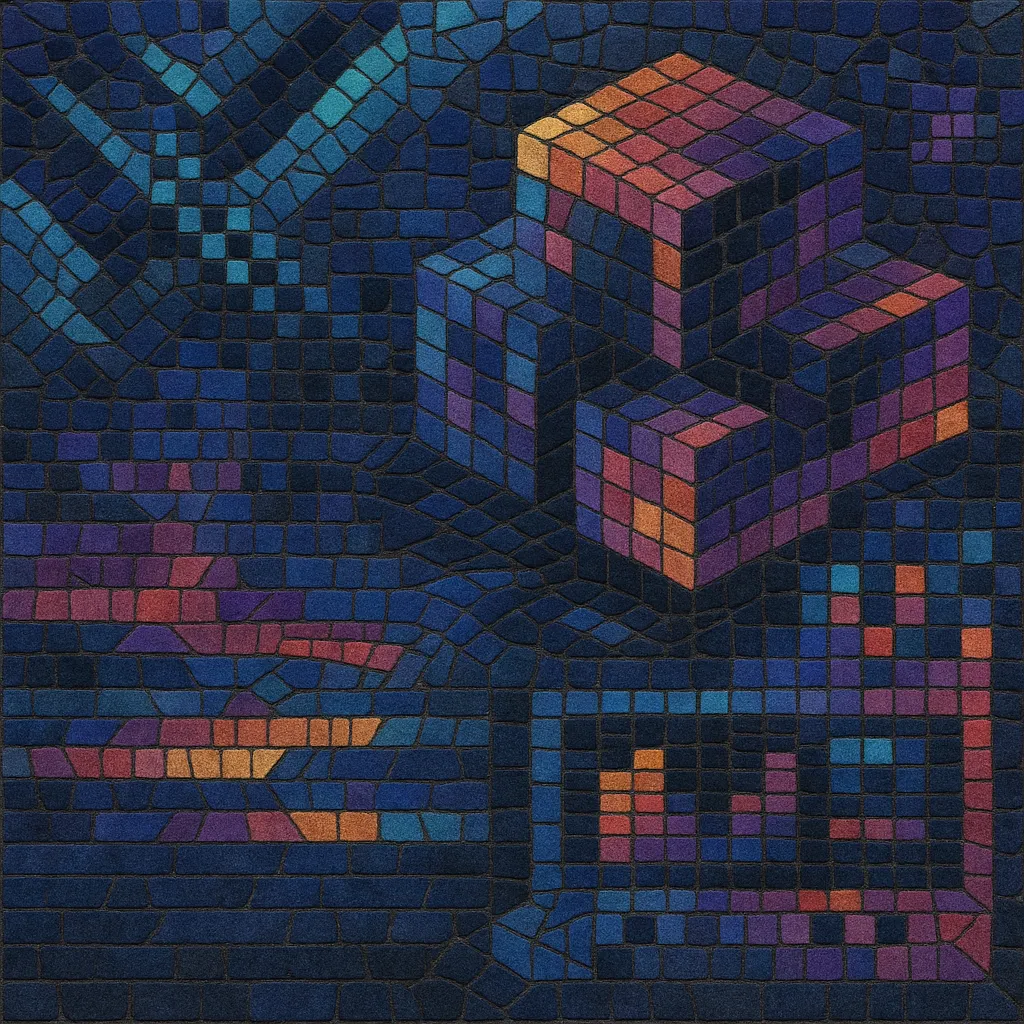Demoscene music is the soundtrack to real‑time computer art “demos” that emerged on 8‑bit and 16‑bit home computers such as the Commodore 64, Amiga, and Atari ST. It is characterized by tracker-based composition, strict technical constraints, and a focus on compact, efficient file sizes.
Typical pieces use sample-based modules (e.g., MOD, S3M, XM) or tiny procedural synths in 64k/4k intros, resulting in bright leads, rapid arpeggios, tight grooves, and bold, melodic hooks. Stylistically it borrows from synth-pop, Italo/euro-disco, electro, early house/techno, and video game chip music, while maintaining a distinctive scene aesthetic centered on virtuosity within limitations.
Beyond its nostalgic timbres, demoscene music emphasizes precision pattern programming, polymelodic counterlines, and rhythmic drive, often composed to sync tightly with graphics and code-based effects at demoparties.
The demoscene grew from European cracking/intro scenes in the mid-to-late 1980s, where groups attached short audiovisual “intros” to pirated games. As crews competed creatively, intros evolved into standalone “demos,” with music composed on early trackers such as Ultimate Soundtracker (1987) on the Amiga. Module formats (MOD) enabled sample-based, pattern-oriented composition with tight memory and channel limits (often 4 channels on Amiga), setting the technical and aesthetic DNA of demoscene music.
During the 1990s, PC-based trackers (Scream/Impulse/FastTracker) expanded capabilities (S3M/IT/XM formats), more channels, and better sample handling. Musicians in groups like Future Crew popularized polished, melodic styles that blended synth-pop, eurodance, techno, ambient, and chip aesthetics. Demoparties (e.g., Assembly, The Party) became hubs for competitions (music compos) and rapid innovation, including size‑limited intros (64k/4k) that spurred procedural synthesis and extreme code/music optimization.
With modern hardware, size‑limited intros matured: musicians use tiny softsynths and code‑driven DSP to generate entire scores at runtime. Meanwhile, module and tracker workflows persisted through tools like Renoise, OpenMPT, and scene-specific synths, keeping the characteristic pattern programming, arpeggios, and syncopation alive. The scene’s influence spread into game audio, electronic subgenres, and internet music cultures, while demoparties continue to celebrate real‑time art and tracker virtuosity.
Demoscene music helped formalize tracker composition, inspired chiptune’s modern revival, and informed the sound design and programming mindset of IDM, glitch, and breakcore producers. Its emphasis on efficiency, algorithmic thinking, and live rendering bridged coder/musician roles and shaped generations of audio developers and game composers.
Use a tracker (ProTracker/FastTracker II/Impulse Tracker, or modern options like OpenMPT and Renoise). Trackers organize music in patterns and channels, encouraging efficient, loop-friendly writing. For size-limited intros (64k/4k), consider scene softsynths or procedural DSP to synthesize all sounds at runtime.
Most tracks sit in 4/4, 120–170 BPM, with driving kick/bass patterns and crisp off‑beat hats. Write grooves at the pattern level, leveraging tight sample envelopes, short decays, and swing (if available). Use rapid fills, breaks, and sync points to align with visual effects.
Favor strong, memorable hooks and counter-melodies. Simulate chords with fast arpeggios (tracker arpeggio fx) and octave doublings to maximize harmony within limited channels. Modal interchange and bright, diatonic melodies fit the style; modulations and scene‑style key changes add drama.
Embrace small, loopable samples (classic 8‑bit/22 kHz Amiga flavors) or generate tones procedurally. Combine punchy one‑shot drums with short wave-based leads, PWM-like timbres, buzzsaw basses, and noise bursts for risers. Use tracker effects (portamento, vibrato, volume/pan slides) to animate lines without adding channels.
Structure around demo visuals: intro motif, build sections aligned to effect reveals, and climactic sync points. Use pattern commands for stutters, retrigs, and tempo changes to hit transitions precisely. Keep endings compact and loop-capable for compo playback.
Mix with headroom; trackers can clip easily. Shape transients with envelopes rather than heavy processing. Prioritize clarity and mono compatibility. For 64k/4k, design a minimal synth architecture (oscillators, envelopes, simple filters/delays) and reuse parameters musically to save bytes.


